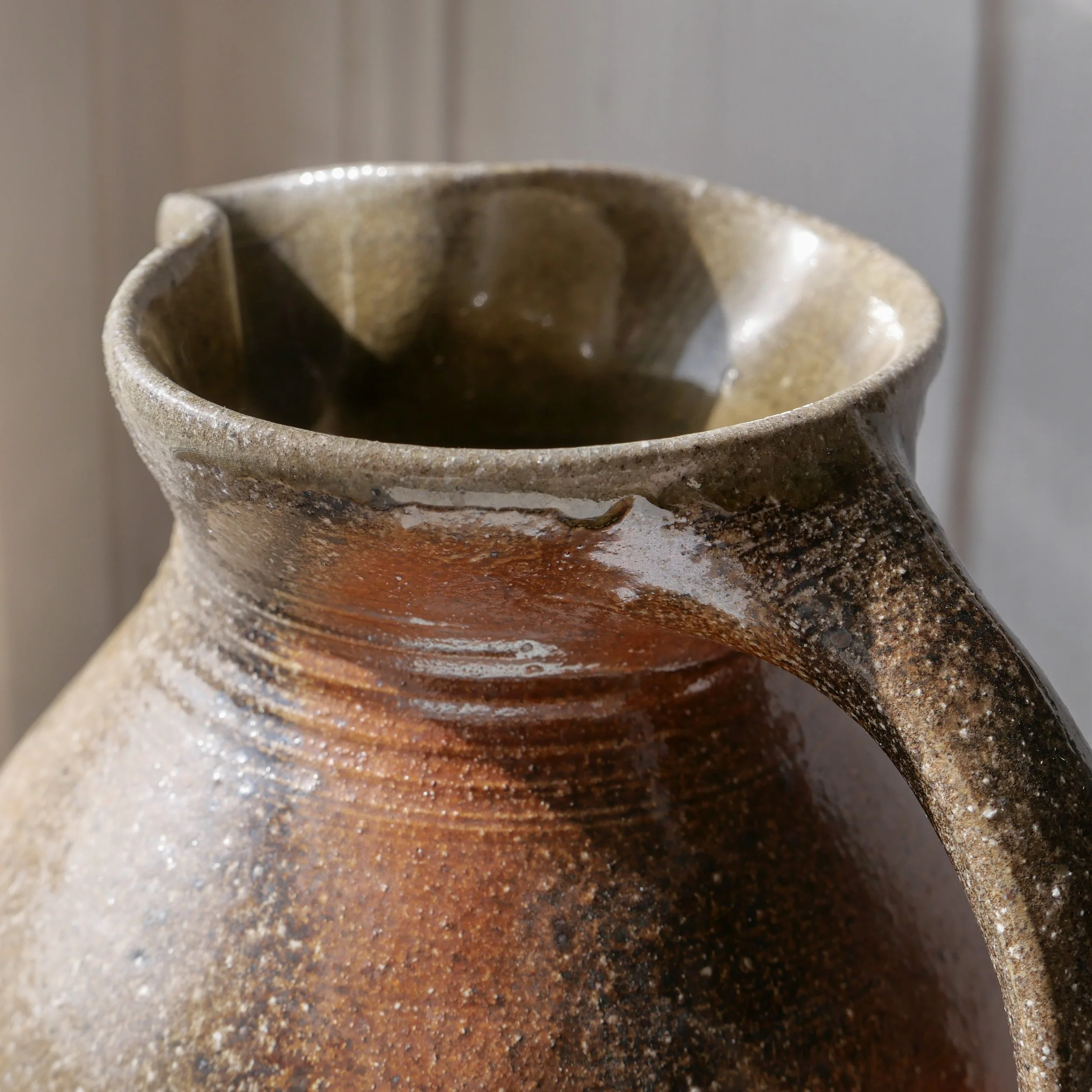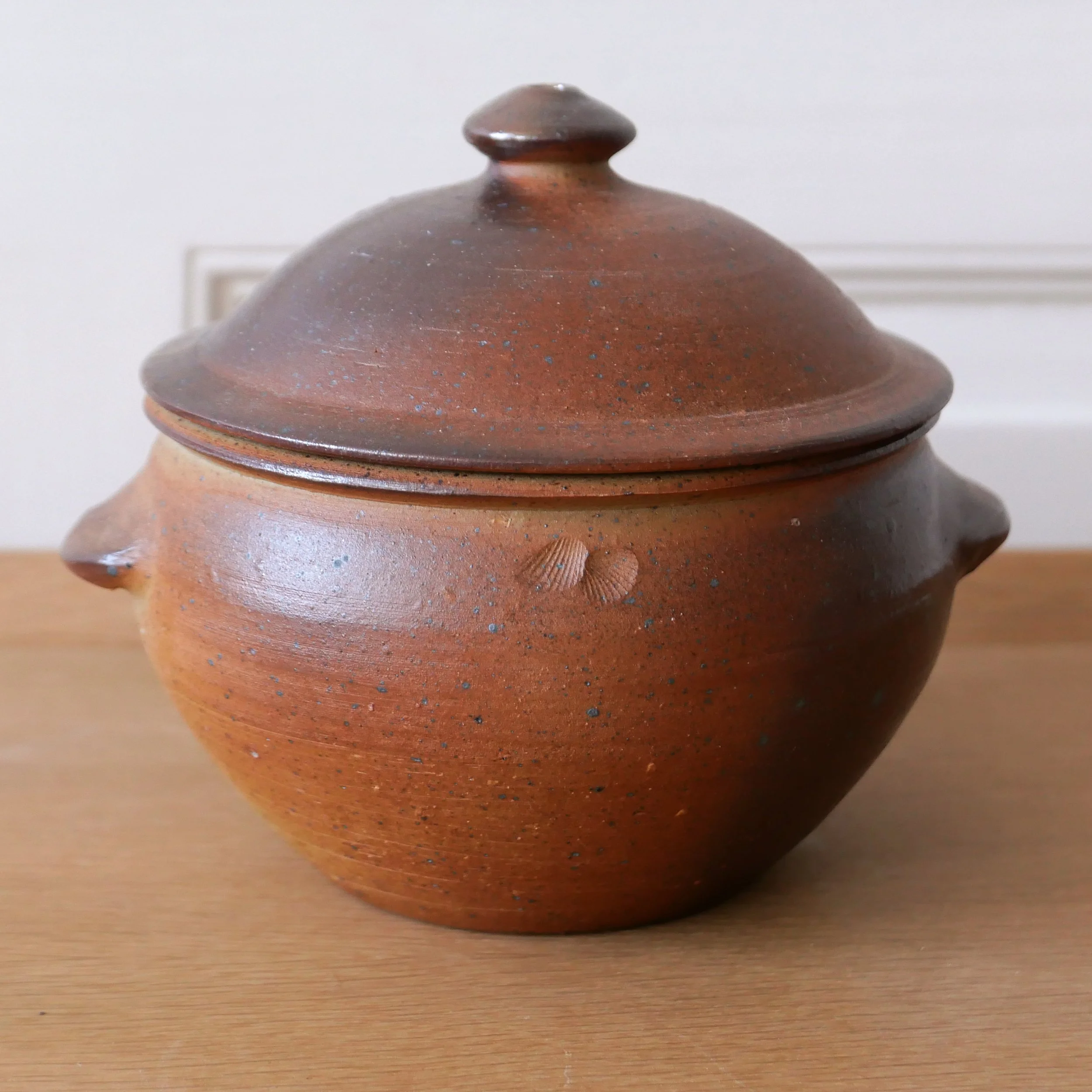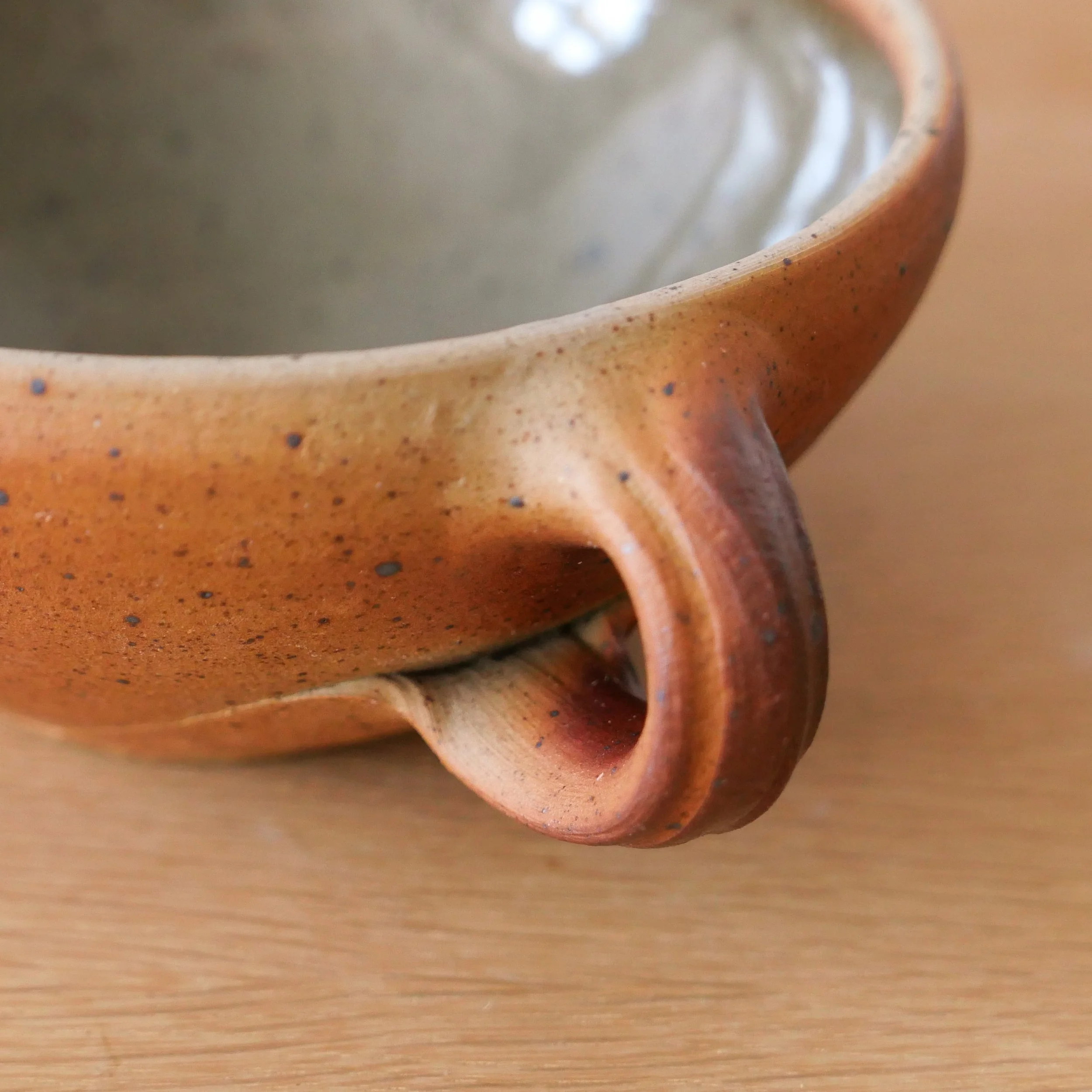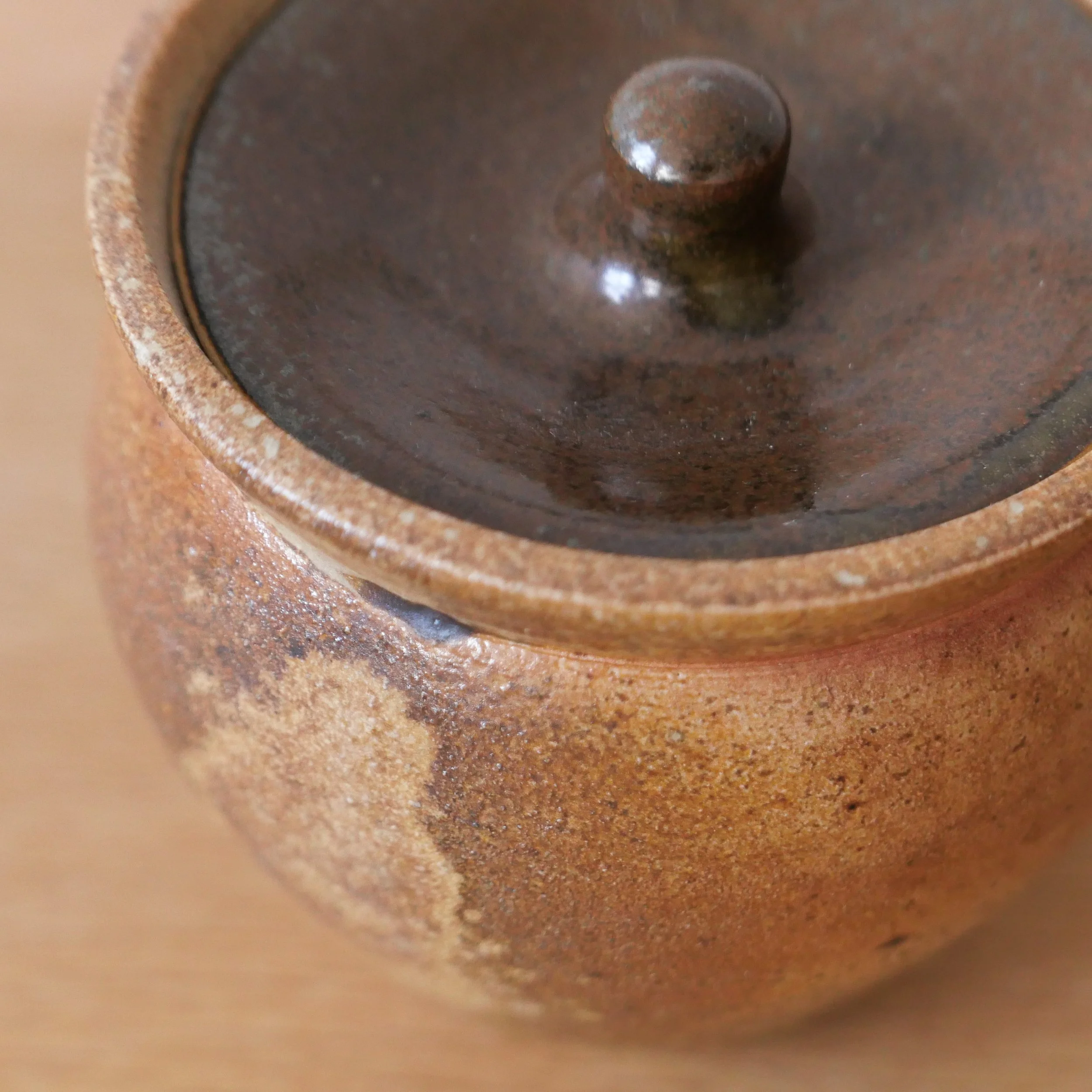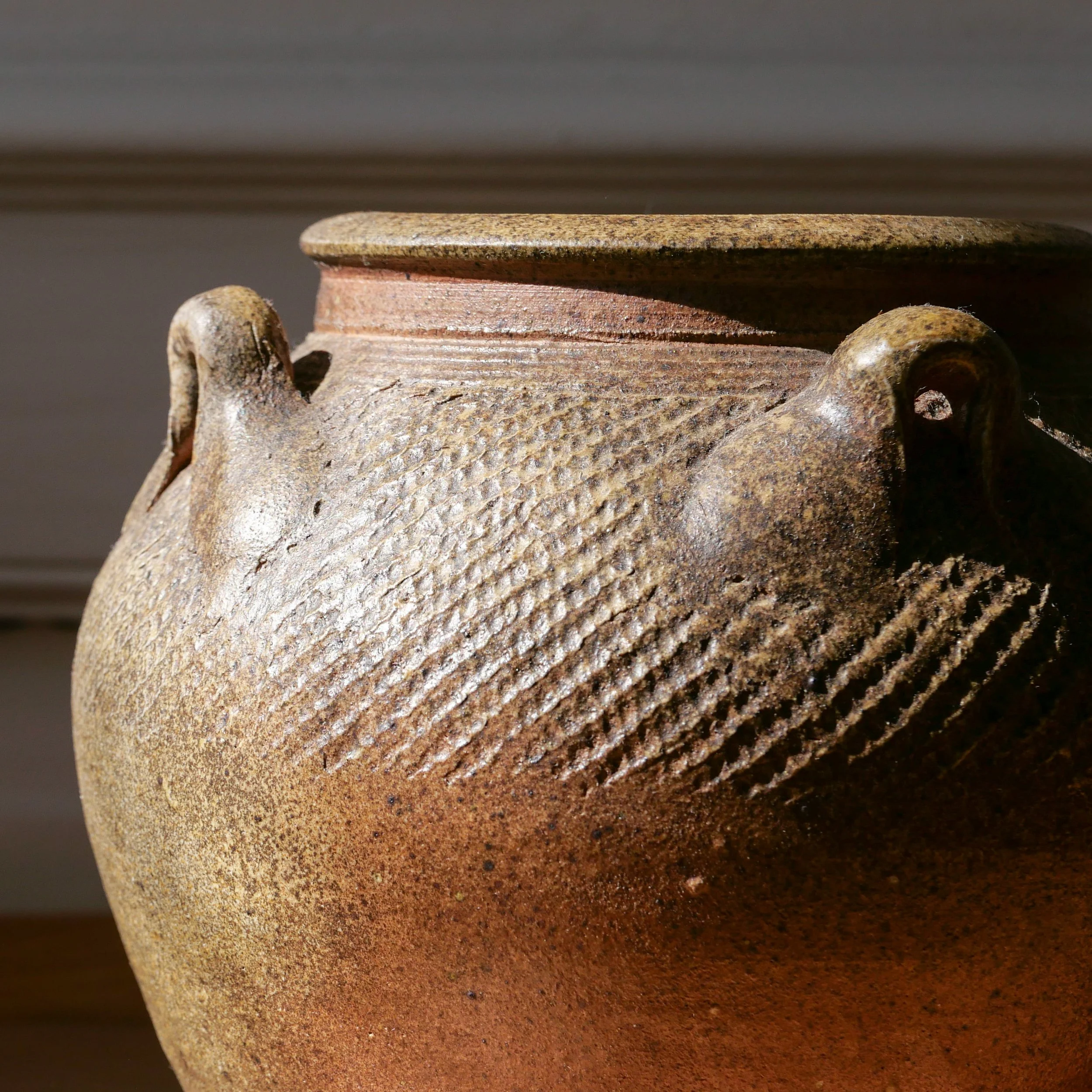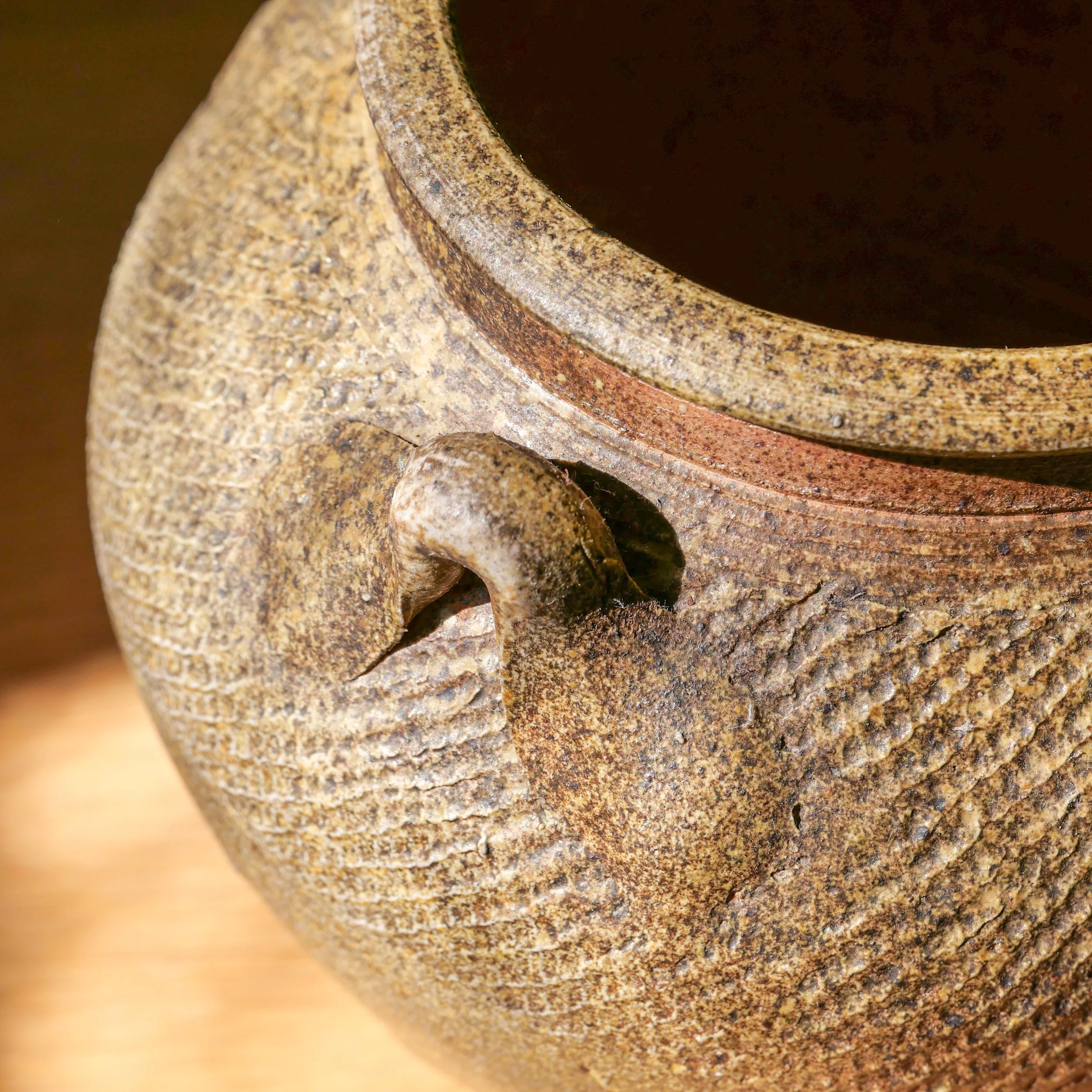Svend Bayer studio pottery
/Svend Bayer is Danish but spent much of his early life in Africa or at school in England.
After university he studied at the pottery of Michael Cardew at Wenford Bridge in Cornwall and then travelled widely in Japan, Korea and Southeast Asia to visit country potteries that produced large storage jars. He returned to England in 1975 and set up his studio at Sheepwash in North Devon.
His pottery is fired in a large wood-fired kiln.
On a visit to another pottery that had a wood-fired kiln, I chatted with the potter who had just had a firing and he wanted to apologise because something I had ordered would not be finished until the next firing. He had three apprentices so, when the kiln was loaded for a firing, it held pots by all four potters and from several months of work so the success or not of a firing was about the livelihood for four families. If a firing went badly then it was a disaster for four families. That tension but also the demands of the process itself meant that the kiln was packed with care and with the skill that comes with experience and the whole process had to be supervised through the days and the nights as the kiln was brought up to temperature and then as the kiln cooled before it was unloaded.
But even in the very best studios accidents happen and the web site for Svend Bayer has an account and photographs by Brigitte Colleaux about a firing disaster at the kiln at Kingbeare in April 2019.
Part of the character of finished pots is that ash, impurities in the clay or different effects of the heat on single pot because that heat varies in intensity across the kiln are all essential to both the quality and the character of ceramics from a wood-fired kiln but when there is a problem that can escalate into a disaster
What is so incredible - as you use ceramic tableware like this - is that you can see and feel the way that the potter worked the malleable clay to, for example, pull out and down and smooth into place with a thumb a handle, and then how that action, that requires the coordination of hand and eye and experience, is then fixed and can be seen by all after the pot is fired and for as long as that piece is still used and appreciated.
This work by Svend Bayer is studio pottery of the very highest quality and is the work of a master craftsman and yet it is also functional pottery that is made to be used and, in being used, the bowls and cups and jars enhance day-to-day life in a way that is difficult to measure or quantify.
The Japanese or Korean style jar with four small handles, shown here, sits on the side in my kitchen because it is the perfect size and height to hold all the spatulas and ladles and cooking spoons I need so that means it is used every day.
The small jar with a lid sits alongside the hob and holds cooking salt.
I swear that the bowls, shown here, when they are full of soup, really do make that soup taste better because the bowls make a simple meal of soup and fresh bread feel special.
And, surely, isn’t that what good craftsmanship and good design is really about?
Buying good ceramic tablewares is one simple way towards sustainability because it should be the antidote to our cavalier attitudes to consumerism … the swipe/like/buy/get bore/discard/buy something new world of this century.
These bowls and the casserole were not particularly cheap but nor were they horrendously expensive but, more than forty years after buying them, I still enjoy using them and, every time I use them, they really do make life feel better.



